In Fuzen's powerful no-code app builder platform, establishing robust data structures is fundamental to creating dynamic and functional applications.
Think of data structures as an excel sheet. The sheets in the excel are basically the data collections and the columns in each sheet are data fields
This process is seamlessly accomplished through the intuitive interface provided by Fuzen.
Accessing Data Structure Settings
The data structure settings can easily be accessed from the Edit Solution page.
For this first, log in to your Fuzen account and select the desired app from your dashboard.
Click on the "Edit Solution" option located in the app management menu.
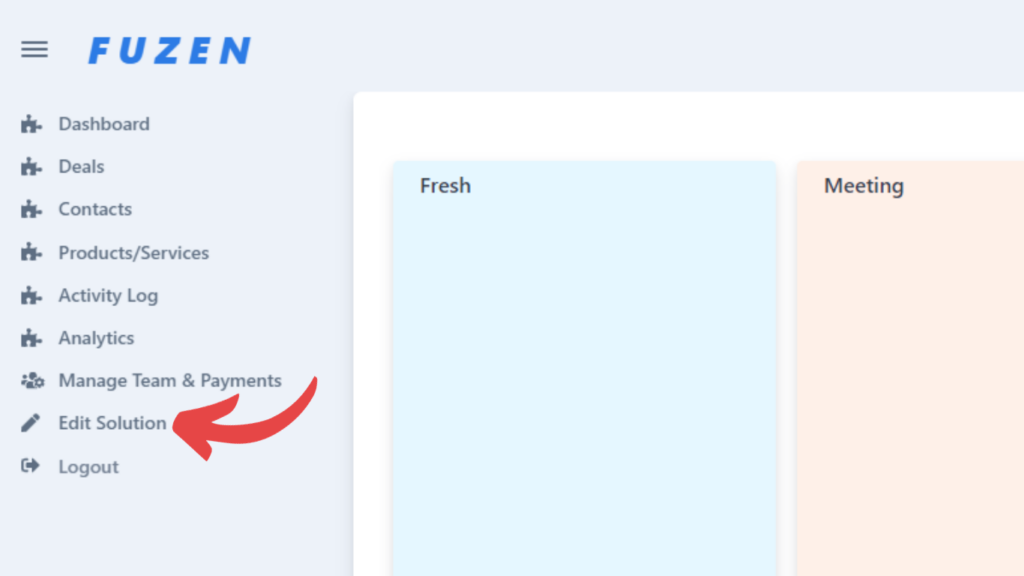
Within the "Edit Solution" page, locate and click on the "Data Structure" tab.

Creating Data Collections
In your Solution, a Data Collection acts like a digital filing cabinet. It's similar to an Excel sheet, but more powerful.
Let continue with our previous example of CRM
Imagine you have a list of customers. For this you create a new sheet in excel and name it Customer. The columns in the sheet represent different pieces of information about the customer, like names, emails, and phone numbers. This collection helps you keep everything in one place and makes it easy to update or find specific details.
In this example the Customer sheet in your excel is the name of the data collection and the various columns like name, email etc. are the data fields.
You can add multiple such data collections in the data structure tab.
To add a new data collection simply type the name of the collection as shown in the image below and then click on Add.
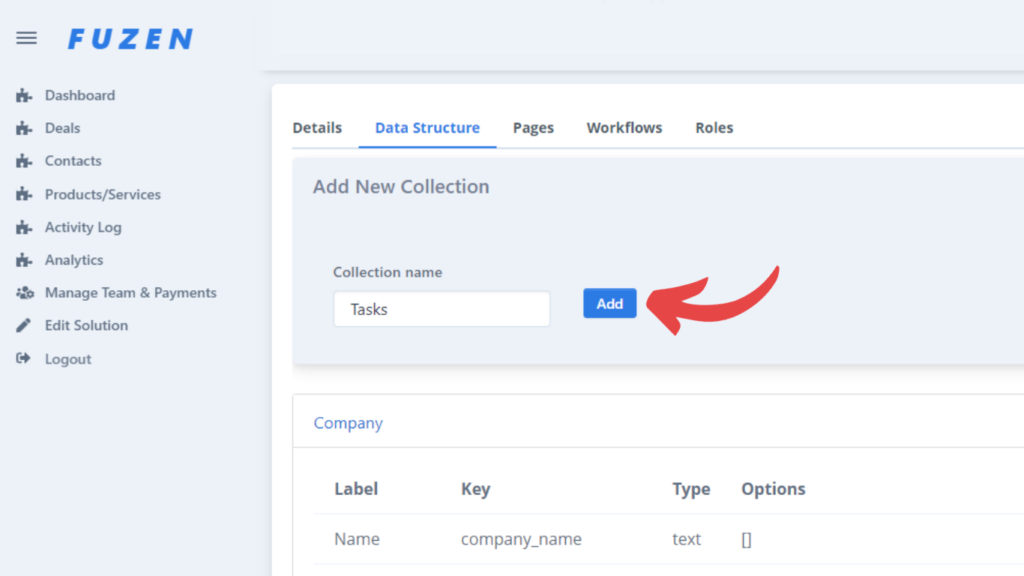
After clicking on Add, the new collection gets created and can be accessed from the accordion below to add data fields.
Adding Data Fields
Data fields serve as the individual building blocks of your application. They contain specific pieces of information that drive the functionality and interactivity of your app, allowing it to dynamically respond to user input and external triggers.
By populating data collections with relevant data fields, you create the foundation upon which your app operates.
Think of data fields as separate columns in the excel sheet. Each one holds a specific piece of information, like a name, a number, or a date. These columns are basically the data fields in your solution. When you put these fields together in collections, your app can do all sorts of clever things, like showing personalized info or showing data entered in table format.
To add data fields, click on the desired data collection in which you want to add the field.
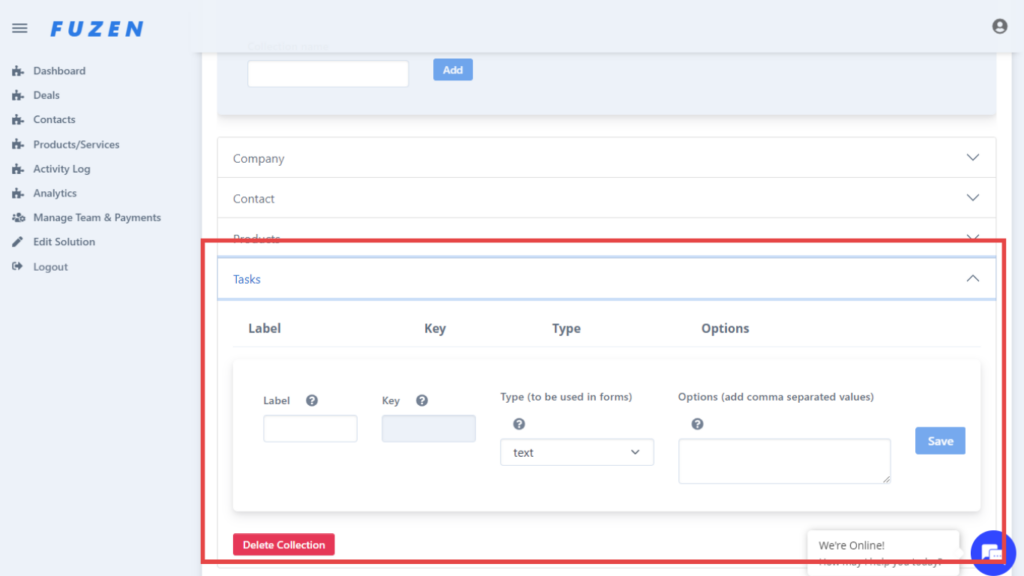
Provide all the required information to add the data field. For this:.
Enter a label, type of the field (text, number, radio, checkbox, date, etc.) and options.
Options are only required when you have selected a field which requires multiple options. For example priority may require High, Medium, Low.
The key is generated automatically when you enter the Label.
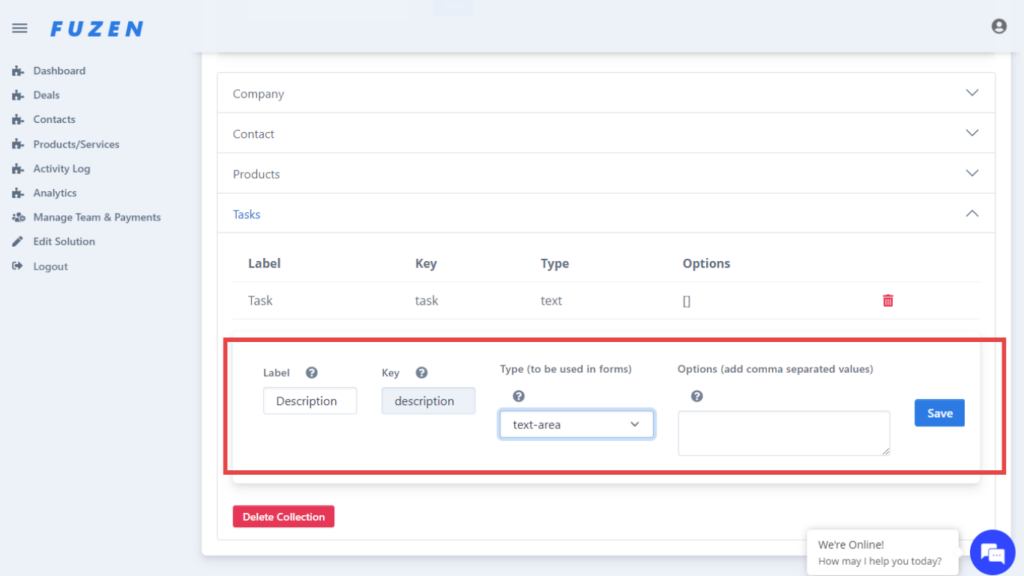
Click on Save to add the data field.
You can add multiple fields in each Data collection.
Your data structure is now ready!
This data structure is needed to create a form, display data, adding a table, etc.
Example of Where Data Structure is Used
While building a CRM you may want to create a form to add new leads/customers/company.
To create such a form you first need to set up a data collection named Company and then add all the data fields like Name, Phone, Email, etc. to the collection.
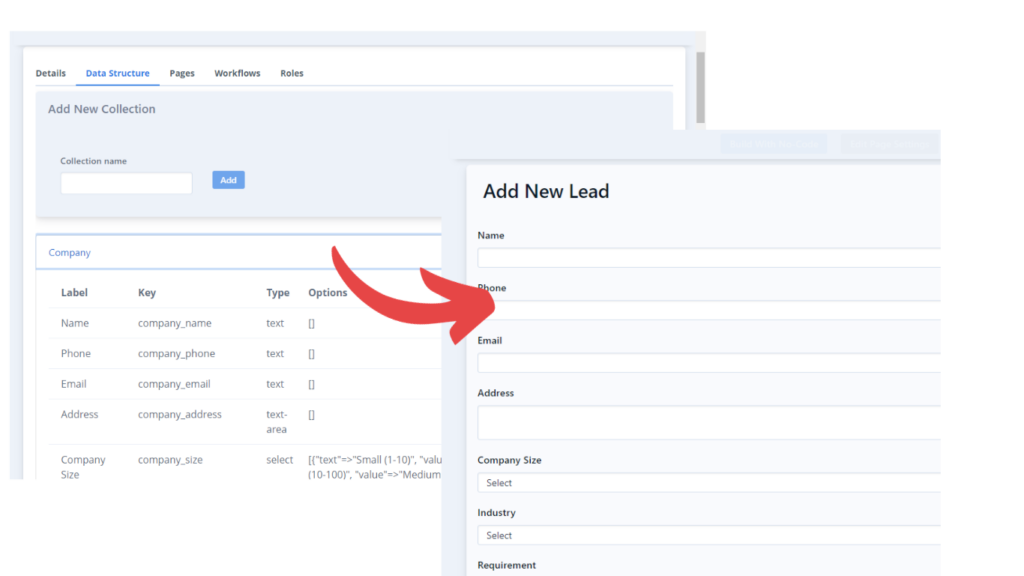
Then open the page where you wish to add the form. Click on Build with No-code and then click on Add New Block to add the required blocks
In this image, The fields in Company data collection is used to create a Add New Lead Form.

